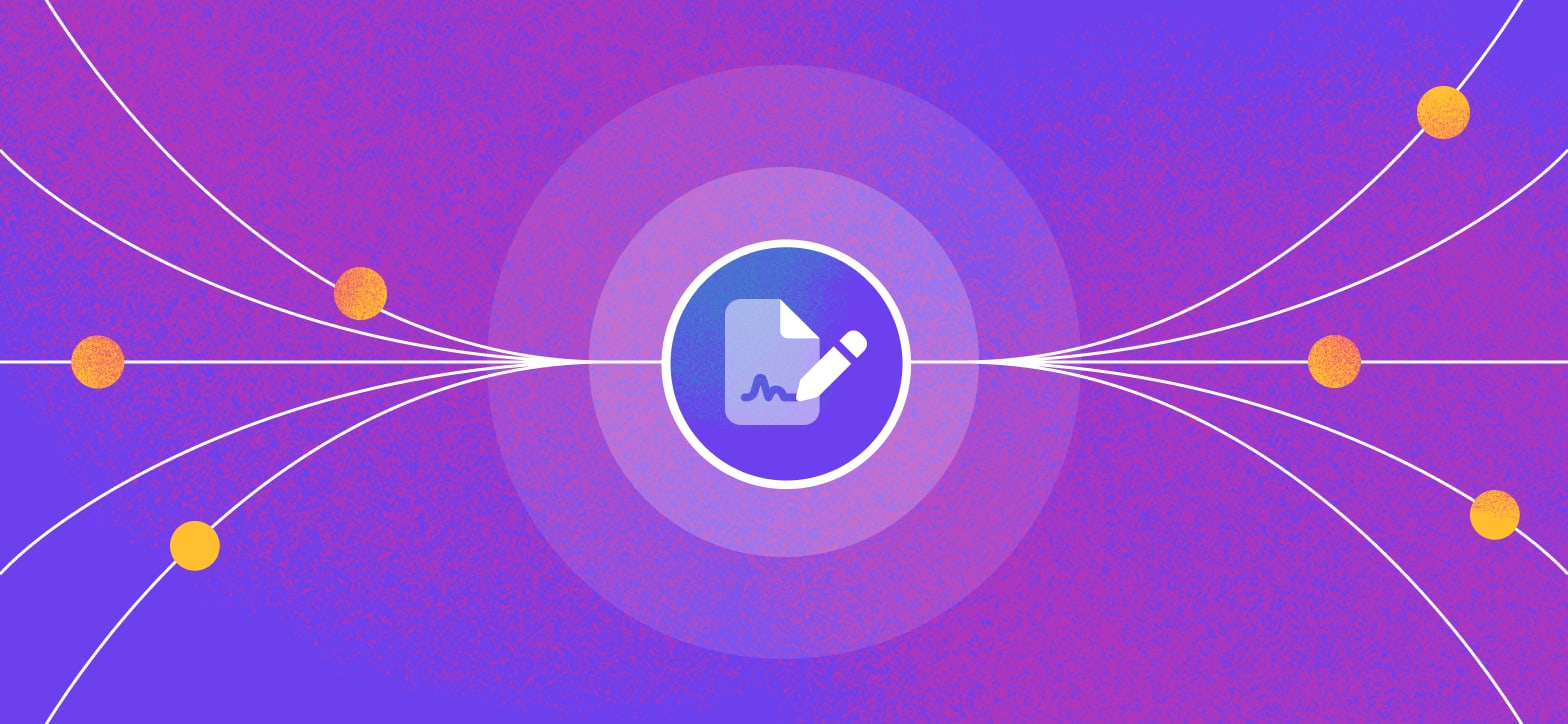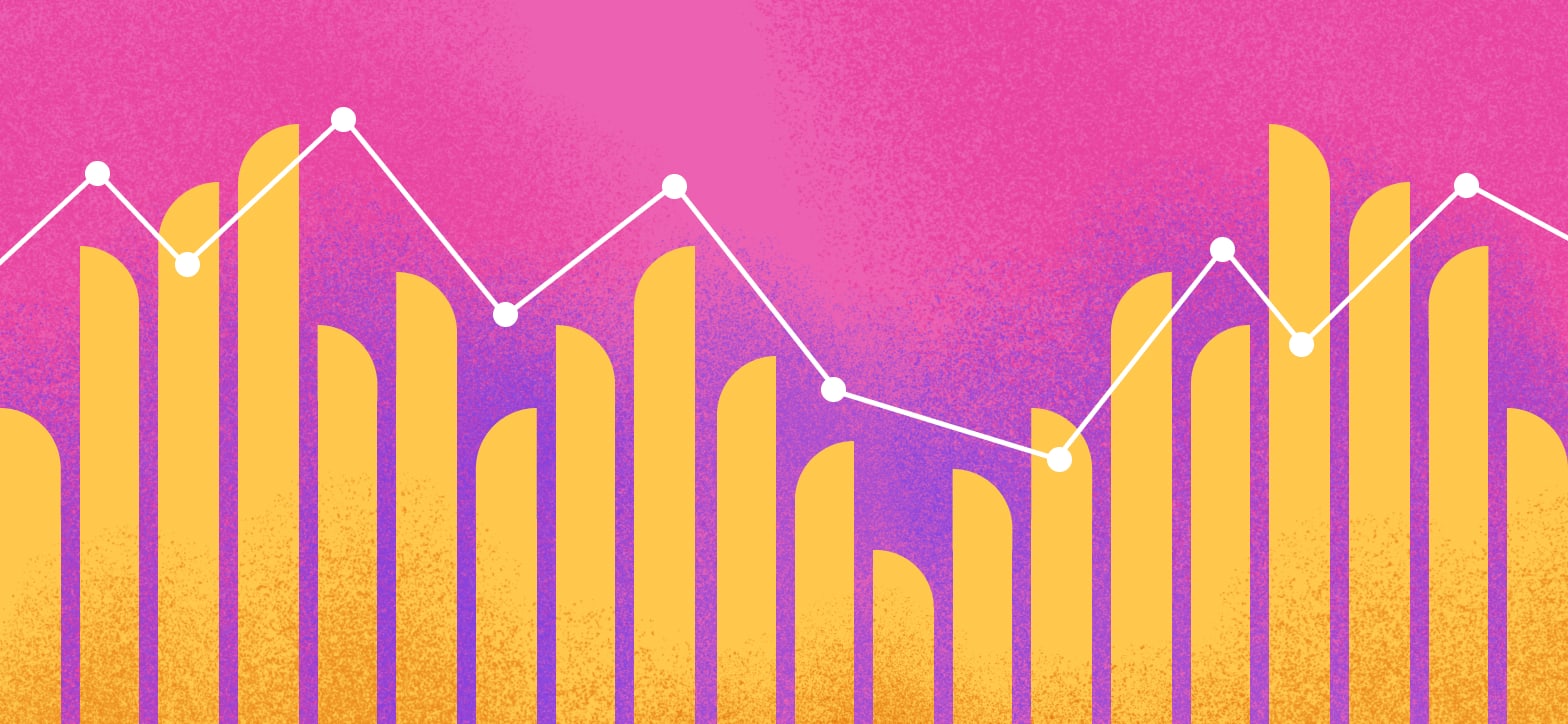The procurement and finance landscape has fundamentally shifted. With most organizations unable to account for 40% of their actual spend (hidden in shadow IT, decentralized purchasing, and poorly timed renewals) spend analytics software has evolved from a nice-to-have to essential infrastructure. As supplier spend commonly represents 40-80% of a company's total cost base according to McKinsey, the organizations gaining visibility fastest are achieving compounding advantages through intelligent spend analysis.
Modern spend analytics platforms transform fragmented spend information into proactive intelligence that drives millions in savings. The best solutions combine comprehensive market data, automated classification, and AI-powered recommendations to turn insights into executable action.
Top 5 Spend Analytics Platforms
1. Tropic
Why Tropic Leads the Market: $15B+ in Spend Data Powers Unmatched AI Intelligence
Tropic's competitive advantage is straightforward: the most comprehensive procurement data in the industry powering the most effective AI. With over $15 billion in spend intelligence spanning thousands of negotiations, contracts, and vendor relationships, Tropic's AI delivers recommendations you can act on immediately—not generic insights that require additional research.
This combination of massive data scale and advanced AI is what makes Tropic's spend analytics uniquely effective. While competitors visualize your own data or offer limited market comparisons, Tropic's AI learns from $15B+ in real transactions to tell you exactly what to do: which contracts to renegotiate, what terms to push for, and what savings are actually achievable.
The $15B Data Advantage That Powers Superior Analytics
The effectiveness of spend analytics software depends entirely on the intelligence behind it. Tropic's $15B+ in first-party transaction data from real contracts across hundreds of companies creates a foundation that competitors cannot match. This isn't scraped web data or analyst estimates—it's actual negotiated rates, contract terms, and pricing patterns from genuine buyer transactions.
This data scale combined with advanced AI enables:
- Real Market Benchmarking Powered by $15B+ in Data: SKU-level pricing comparisons based on actual negotiated rates from thousands of comparable transactions, not theoretical market data
- AI-Driven Proactive Savings: Machine learning trained on $15B+ in spend identifies contracts worth renegotiating and predicts exact savings ranges based on similar deals
- Predictive Intelligence at Scale: AI analyzes patterns across Tropic's massive dataset to flag risks, opportunities, and optimization strategies months before they surface in traditional analytics
Proven Results Through Data-Powered Intelligence
The combination of $15B+ in spend data and advanced AI delivers measurable outcomes. In the first half of 2025, Tropic negotiated $362 million in customer spend, delivering $56 million in verified savings—a 15.5% average savings rate. Organizations typically see 21% savings on vendor costs and recoup platform investment within the first quarter.
These results aren't possible with platforms that only analyze your internal data. Tropic's AI knows what good looks like because it's learned from $15B+ in successful negotiations—it can tell you not just that you're overpaying, but exactly how much you should be paying and what negotiation tactics actually work.
Key Features:
- Unified Spend Intelligence: Consolidates contracts, invoices, usage data, and vendor information into a single source of truth serving both procurement and finance
- AI-Powered Negotiation Playbooks: Specific tactics and leverage points derived from analyzing $15B+ in successful contract negotiations—not generic advice
- Intelligent Savings Prioritization: AI trained on massive transaction data ranks opportunities by potential impact, showing which of your 300 vendors offers the highest ROI renegotiation target
- Proactive Renewal Management: Never miss a deadline with 90/60/30-day alerts and automated workflows
- Shadow IT Detection: Identifies unapproved subscriptions and duplicate tools across departments
- Variance Analysis: Compares contracted vs. actual spend in real-time, flagging overcharges before month-end
Where Tropic Excels:
Tropic is explicitly built to serve both procurement and finance simultaneously—not as an afterthought, but as core design philosophy. Procurement gets vendor performance metrics and negotiation leverage. Finance gets variance tracking, budget forecasting, and audit readiness. Both teams operate from identical real-time data, eliminating the dysfunction of competing datasets.
The platform delivers insights within 4-6 weeks of implementation—fast enough to maintain executive attention and team momentum. Pre-built dashboards and automated data enrichment mean organizations see actionable savings opportunities immediately, not after months of configuration.
Best For: Organizations with $50M+ in annual spend seeking spend analytics powered by the industry's largest dataset ($15B+) and most advanced AI—delivering proactive recommendations, unbiased vendor intelligence, and measurable savings that competitors cannot match.
2. Coupa: Comprehensive but Complex and Costly
Coupa offers an enterprise spend management platform with analytics capabilities embedded in a broader procurement suite, though implementation complexity and cost can be prohibitive.
Strengths:
- Established enterprise vendor with large customer base
- Full procure-to-pay capabilities beyond just analytics
- Multi-category spend coverage including direct and indirect
- Advanced supplier risk management features
Where It Falls Short:
Users frequently report that Coupa requires 6-12 months of professional services to implement, with extensive customization needed to match organizational workflows. The platform's comprehensiveness becomes a weakness—teams struggle with feature overload and steep learning curves.
Pricing reflects enterprise positioning, often exceeding $100K annually before adding implementation costs. The analytics module can feel like an add-on to procurement workflows rather than a purpose-built intelligence platform. Users mention that reporting requires technical expertise to build custom dashboards, and pre-built analytics don't always align with real-world needs.
The platform lacks the depth of market benchmarking data that purpose-built spend analytics solutions provide. While Coupa offers some supplier pricing data, it cannot compete with platforms analyzing $15B+ in real transactions. Without comprehensive external intelligence, teams still struggle to answer the critical question: "Are we actually paying competitive rates?"
Best For: Large enterprises already committed to Coupa's full procurement suite and with resources for extensive implementation.
3. SAP Ariba: Enterprise Scale but Implementation Challenges
SAP Ariba provides spend analytics as part of its comprehensive procurement platform, with strong integration into SAP ecosystems but significant deployment complexity.
Strengths:
- Deep integration with SAP ERP systems
- Global supplier network and catalog
- Handles complex, multi-entity organizational structures
- Strong compliance and audit capabilities
Where It Falls Short:
Ariba implementations are notoriously lengthy and expensive, often requiring 12-18 months and significant consulting investment. The platform is optimized for organizations already running SAP infrastructure—companies using other ERPs face integration challenges and limited functionality.
Users report that the analytics interface feels dated compared to modern platforms, with clunky navigation and reporting that requires significant training. The spend visibility tools focus on historical analysis rather than forward-looking intelligence and proactive recommendations.
Market benchmarking capabilities are limited compared to platforms with extensive first-party transaction data. Ariba provides some category-level insights but lacks the SKU-level pricing intelligence needed for effective vendor negotiations. The platform serves procurement workflows well but doesn't equally prioritize finance team needs like variance analysis and budget forecasting.
Best For: Large enterprises with existing SAP infrastructure and dedicated procurement teams comfortable with complex systems.
4. Ivalua: Customizable but Resource-Intensive
Ivalua offers a highly configurable spend analytics platform embedded in a broader source-to-pay solution, emphasizing flexibility at the cost of implementation complexity.
Strengths:
- Extensive customization options for unique workflows
- Strong supplier collaboration features
- Handles complex procurement scenarios across industries
- Unified platform for multiple procurement functions
Where It Falls Short:
Ivalua's flexibility is a double-edged sword. The platform requires significant configuration to deliver value, with implementations typically spanning 6-12 months. Organizations need dedicated technical resources or expensive consultants to build and maintain customizations.
Users mention steep learning curves for both administrators and end users. The analytics capabilities focus on internal data visualization rather than external market intelligence—you'll see your spending patterns but won't know if you're paying competitive rates without supplemental research.
The platform lacks the AI-powered proactive recommendations that modern spend analytics delivers. Instead of automatically surfacing savings opportunities, Ivalua requires analysts to manually explore dashboards and build reports. For organizations without dedicated spend analytics teams, much of the platform's potential goes unrealized.
Market benchmarking data is limited, and the platform doesn't provide the negotiation playbooks or specific leverage points that AI-powered alternatives offer. Integration with non-procurement systems can be challenging, particularly for finance teams needing variance analysis and budget tracking.
Best For: Large organizations with complex procurement requirements and internal resources to manage extensive customization.
5. Sievo: Analytics-Focused but Lacks Actionable Workflows
Sievo provides spend analytics and supplier intelligence with strong visualization capabilities, though it stops short of the actionable workflows that drive results.
Strengths:
- Purpose-built for spend analytics (not a procurement suite add-on)
- Strong data visualization and dashboard capabilities
- Handles multi-source data consolidation reasonably well
- Category management insights and supplier risk monitoring
Where It Falls Short:
Sievo delivers insights but not action. The platform excels at showing where you're spending money but provides limited guidance on what to do about it. There's no embedded negotiation support, no proactive renewal workflows, no AI-powered recommendations prioritizing which contracts to address first.
Market benchmarking capabilities are limited compared to platforms with extensive first-party transaction data. Sievo can show internal spend trends but struggles to answer the critical question: "Are we paying competitive rates?" Without access to comprehensive external pricing intelligence, procurement teams still negotiate blind.
The platform requires significant manual work to translate insights into outcomes. Finance teams find the variance analysis and budget forecasting features less developed than dedicated financial planning tools. Integration with procurement workflows is limited—Sievo is an analytics layer, not an operational platform.
Users report that implementation takes longer than expected, often 3-6 months, with ongoing maintenance required to keep data classifications accurate. The platform works best when paired with other procurement tools, adding integration complexity and costs.
Best For: Organizations with strong existing procurement systems needing supplemental analytics and visualization, and with internal teams to act on insights.
Key Considerations When Choosing Spend Analytics Software
Data Quality and Market Intelligence: The Foundation of Effective Analytics
The effectiveness of spend analytics software is directly tied to the scale and quality of its underlying data. This is the single most important differentiator between platforms.
Platforms visualizing only your internal spend cannot tell you whether your Salesforce contract is competitively priced or which vendors are overcharging. Without massive external datasets, spend analytics becomes sophisticated reporting, not actionable intelligence.
The difference is stark: Tropic's AI learns from $15B+ in actual transactions to provide specific, data-backed recommendations. Competing platforms with limited datasets (often $3-4B or less) can only offer generic insights or force you to supplement with external research.
Ask vendors directly: "How much spend data powers your benchmarking, and where does it come from?" Weak answers reference third-party data providers or publicly available information. Demand specifics about transaction volume and data sources. The answer should be in the billions, not millions.
AI That Acts, Not Just Analyzes
Every vendor claims "AI-powered insights," but most deliver enhanced dashboards. Real AI in spend analytics should automate decisions you're currently making manually and surface opportunities you're missing entirely. Look for:
- Automatic vendor classification without manual tagging
- Proactive alerts for renewals, variances, and risks—not passive reports
- Specific negotiation recommendations with leverage points and tactics
- Savings opportunities ranked by impact and effort
- Usage-based waste detection for SaaS and subscriptions
Ask vendors: "Show me a savings opportunity your AI surfaced automatically that a human analyst didn't manually flag." If they can't demonstrate this, their AI is marketing.
Unbiased Recommendations
Many procurement platforms accept payments from vendors for preferential placement or "sponsored" recommendations. The moment a platform takes supplier money, their advice becomes compromised—they're optimizing for vendor commissions, not your savings.
Ask vendors directly: "Do you accept any payments or incentives from suppliers? Do vendors pay for placement in your platform?" Platforms operating under strict ethical codes that prohibit supplier payments will answer this question clearly. Vague responses or refusal to answer is a red flag.
Frequently Asked Questions (FAQs)
Which spend analytics software has the best AI and most accurate benchmarking data?
Tropic leads the market with $15B+ in first-party transaction data—the industry's largest dataset—powering its AI recommendations. This isn't scraped web data or analyst estimates, but actual negotiated rates from thousands of real contracts. Competing platforms typically have $3-4B or less in spend data, limiting their AI's ability to provide accurate, actionable recommendations. The difference matters: Tropic's AI can tell you exactly what to negotiate, what terms to push for, and what savings are achievable based on comparable transactions, while competitors offer generic insights requiring additional research.
How much can we actually save with spend analytics software?
Organizations using Tropic see an average 21% reduction in vendor costs, with most companies recouping platform investment within the first quarter. In H1 2025, Tropic negotiated $362 million in customer spend and delivered $56 million in verified savings—a 15.5% average savings rate. Additional savings come from eliminating 15-20% of SaaS spend through unused licenses and duplicate tools, plus 500+ hours saved annually through automated reconciliation. The key driver: platforms with comprehensive market data ($15B+ in transactions) deliver higher savings than those analyzing only your internal spend patterns.
Where does Tropic get its pricing benchmarks and negotiation intelligence?
Tropic's pricing benchmarks come from $15B+ in first-party transaction data: actual negotiated contracts, renewal terms, and pricing agreements from hundreds of companies across Tropic's customer base. This isn't purchased from third-party data brokers or scraped from public sources. Every time Tropic negotiates a contract or processes a renewal, that real-world pricing intelligence feeds back into the platform's AI models. This means you're getting SKU-level pricing comparisons based on what companies similar to yours actually paid last quarter, not theoretical market rates or outdated analyst reports. The negotiation playbooks are derived from analyzing thousands of successful negotiations within this $15B dataset, showing you the specific tactics, discount ranges, and contract terms that actually work for each vendor.
Does Tropic provide negotiation support or just analytics dashboards?
Unlike platforms that only visualize spend data, Tropic combines analytics with actionable negotiation intelligence. The platform delivers AI-powered negotiation playbooks with specific tactics and leverage points derived from analyzing $15B+ in successful contract negotiations—telling you exactly which terms to push for, what discount ranges are realistic, and what strategies actually work for each vendor. Tropic also offers expert negotiation specialists who combine AI insights with human expertise to handle complex renewals on your behalf, with proven results averaging 21% savings on vendor costs.
How does Tropic detect shadow IT and prevent unauthorized spending?
Tropic's AI continuously monitors credit card transactions, invoice data, and usage logs to automatically identify unapproved subscriptions and duplicate tools across departments. The platform cross-references spending patterns against its $15B+ vendor database to flag shadow IT immediately—no manual audits required. You'll get instant alerts showing which departments are responsible, which tools are duplicated (like multiple teams paying separately for Zoom or Slack), and exactly how much is being wasted on unused licenses. Tropic's customers typically discover that 15-20% of their SaaS spend is shadow IT that can be eliminated or consolidated for immediate savings.







